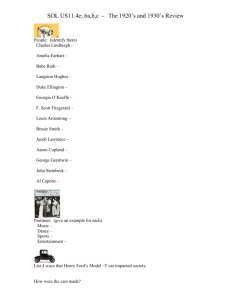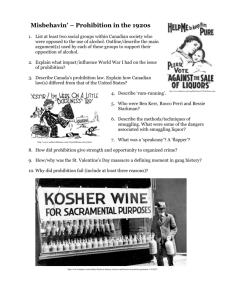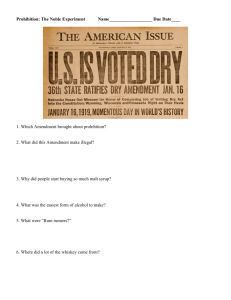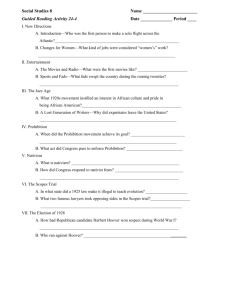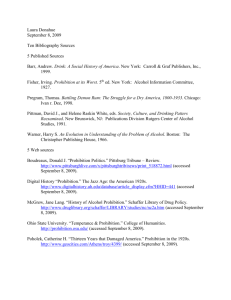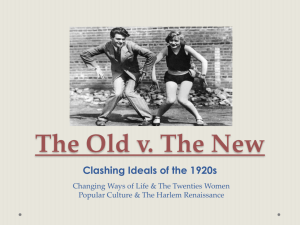Was prohibition a failure?
advertisement
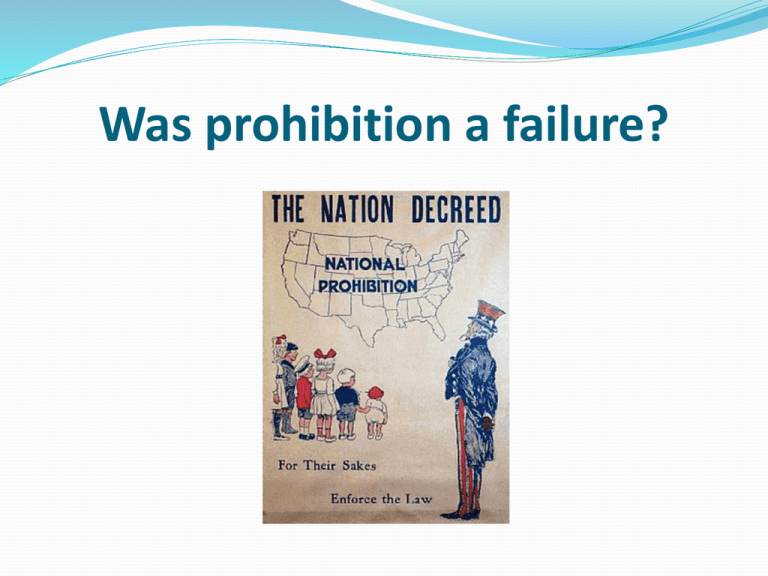
Was prohibition a failure? Learning objective – to understand the reasons why prohibition failed. I can describe the different reasons why prohibition failed. Grade D I can explain and make links between the different reasons why prohibition failed. Grade B I can explain the links between and the importance of the reasons why prohibition failed. Grade A and A*. Starter – US President, Warren Harding used to hold drinking parties in the Oval Office during prohibition. True or false? Starter – US President, Warren Harding used to hold drinking parties in the Oval Office during prohibition. True Key words Bootlegging – the illegal trade in booze. Bootleggers – those involved in supplying illegal booze. Speakeasies – Illegal drinking rooms. Why did many people ignore prohibition? Many Americans from the beginning ignored the prohibition laws. Across America, thousands of speakeasies were opened which did a roaring trade. There were 100,000 speakeasies in New York alone in 1925. Throughout the 1920’s, prohibition became the most ignored law in US history. What made matters worse was the fact that President Harding was known to drink alcohol regularly in the White House. Why was prohibition difficult to enforce? When alcohol producers and speakeasies were shut down, it was very easy to find alternative supplies. Canada and Mexico still produced alcohol and it was easy to smuggle booze across the 4,500 mile borders the US had with the two countries. It was easy to obtain the ingredients to make alcoholic drinks. Many Americans created their own ‘bath tub breweries’. The Treasury Department was responsible for enforcing prohibition, but they had too few agents who were poorly paid. Therefore, the agents were easy to bribe. What was prohibition’s impact upon organised crime? Illegal booze became a multi-million business in the 1920’s and attracted organised crime groups, such as the Mafia. The centre of the illegal booze trade was Chicago, as it was close to Canada and had excellent transport links to the rest of America. Rival gangs fought each other for control of the bootlegging industry. Many were shocked at the violence which control of bootlegging caused. Most notoriously in 1929 in the St. Valentine’s Day Massacre. Why was Al Capone famous? He was the most famous gangster in the 1920’s and dominated the bootlegging industry with the use of bribery and intimidation. He kept a high profile with his sharp suits, high profile company of celebrities and politicians and supporting charities. Capone described himself as a businessman who supplied the public with what they wanted and his business was worth $27 million. Widely believed to have been behind the St. Valentine’s Day Massacre of his rival gang lead by Bugsy Moran. Eventually imprisoned in 1931 on tax evasion charges. Why did Prohibition end? The issue of prohibition split the Democrat Party from 1928. Many women changed their minds about prohibition and began to campaign to end it. Many now believed that prohibition had increased rather then reduced domestic violence. The Wickersham Commission of 1929 supported prohibition but argued that it was impossible to enforce. Many argued that ending national prohibition would, in the Depression, create jobs. When Roosevelt became President in 1932, he passed the Beer Act [1933] which raised alcohol limits stated in the Volstead Act. This was followed in 1933 by the 21st Amendment to the Constitution which allowed for individual states to choose whether they wanted prohibition or not. Task This word cloud summarises the content of today’s lesson. Write down all the words in the word cloud and write definitions/descriptions for each one. There are 13 words. Extension task Write an answer to the exam question – Why did prohibition fail? Plenary These collection of images all related to why prohibition failed. Can you identify who or what is in the pictures and write how each picture related to the central question of why prohibition failed.
